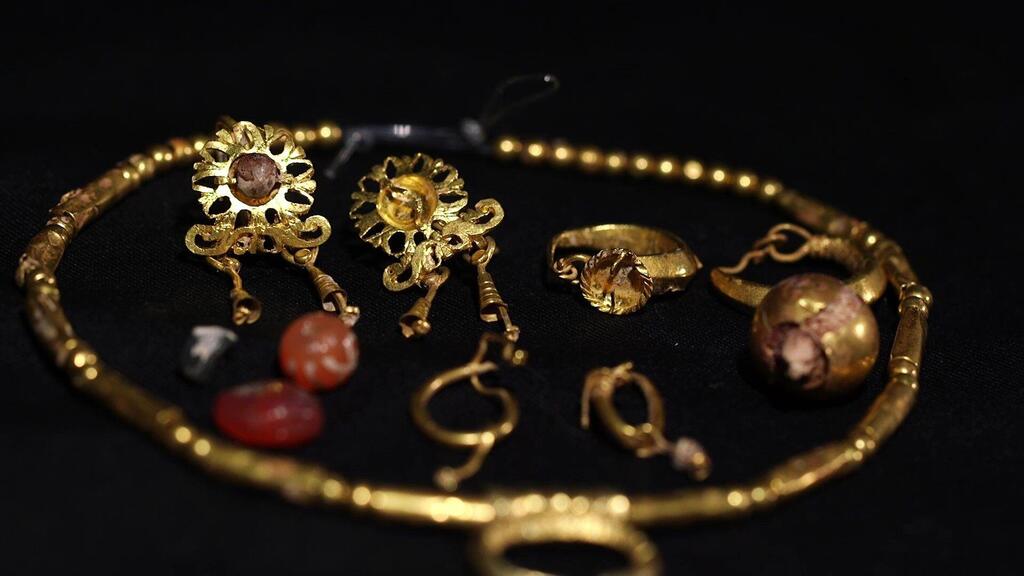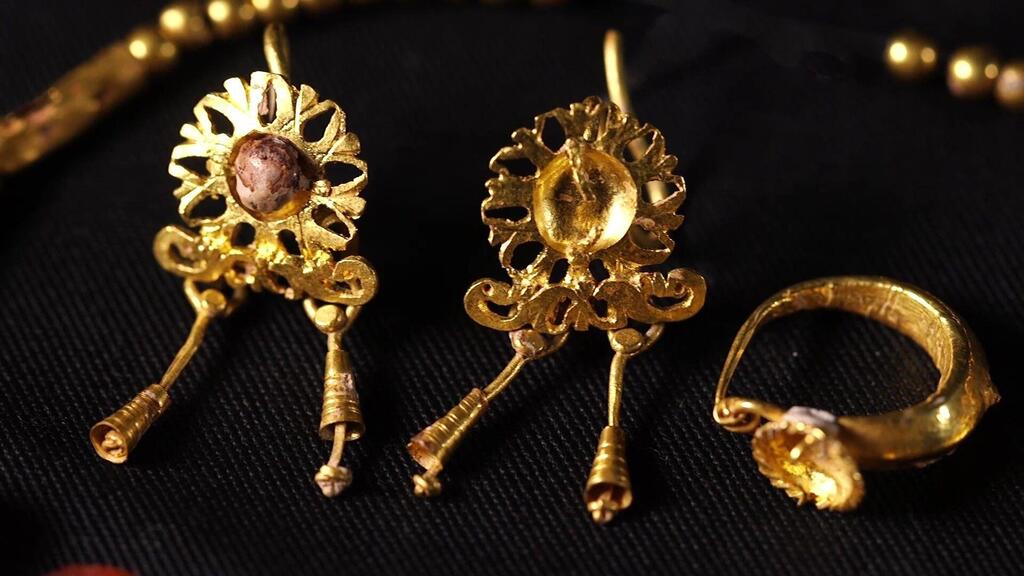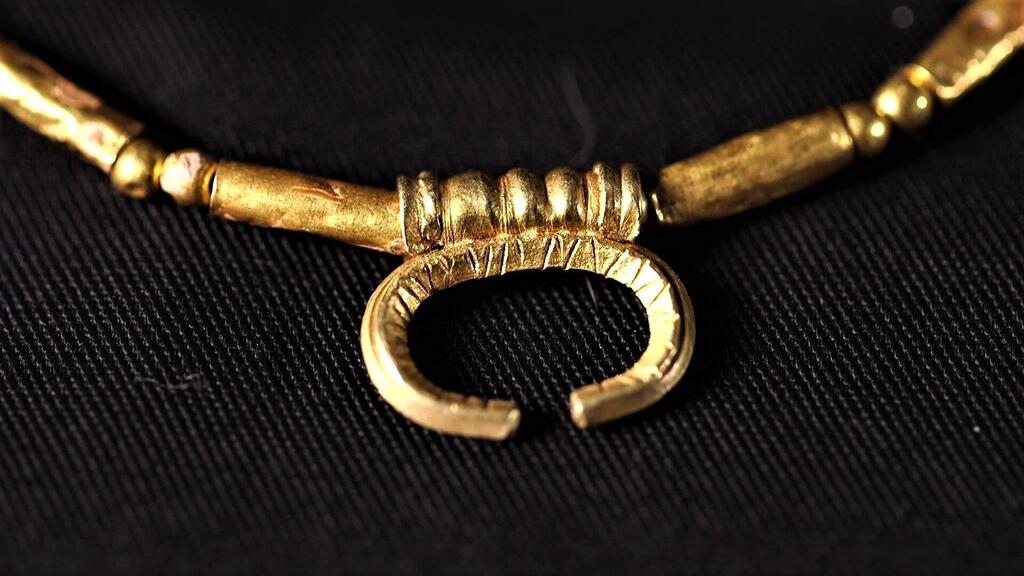Ancient Roman-era jewels found decades ago in burial caves in Jerusalem, will go on public display on Monday, at the 48th Archaeological Congress, the Israel Antiquities Authority said.
Valuable Roman-era jewels found in Jerusalem tomb
(צילום: אמיל אלג'ם, רשות העתיקות)
Earrings, a hairpin, a pendant, and beads — all made of gold, carnelian beads, and a glass bead were discovered inside the remains of a lead coffin found on Mount Scopus during an excavation in the 1970s. Yael Adler led the excavation but died and the findings were never published.
The items bear the symbols of Luna, the Roman moon goddess, the IAA said, and accompanied the girls in their lifetime. After they died, they were buried with them so that they would continue to protect them in the afterlife.
“These items of jewelry are known in the Roman world, and are characteristic of young girl burials, possibly providing evidence of the people who were buried at these sites. The beautiful jewelry that we researched is an example of such treasures,” said Dr. Ayelet Dayan, head of the Archaeological Research Department, who picked up on Adler’s find.
“Late Roman Jerusalem—renamed Aelia Capitolina—had a mixed population that reached the city after the destruction of the Jerusalem Temple and the evacuation of the Jewish population. People from different parts of the Roman Empire settled in the city, bringing with them a different set of values, beliefs and rituals. The pagan cult of the city’s new population was rich and varied, including gods and goddesses, among them the cult of the moon goddess Luna,” Dr. Dayan said.
According to Eli Eskosido, Director of the Israel Antiquities Authority, “The interring of the jewelry together with the young girl is touching. One can imagine that their parents or relatives parted from the girl, either adorned with the jewelry, or possibly lying by her side, and thinking of the protection that the jewelry provided in the world to come. This is a very human situation, and all can identify with the need to protect one’s offspring, whatever the culture or the period.”
The Israel Antiquities Authority recently launched a “Publication of Past Excavations Project”, in which old excavations that were not fully published, such as Adler’s, are now being published.
“The location of the original reports that gathered dust over the years in the Israel Antiquities Authority archives, and physically tracing the whereabouts of the items themselves, has shed light on long-forgotten treasures,” Dr. Dayan said.







